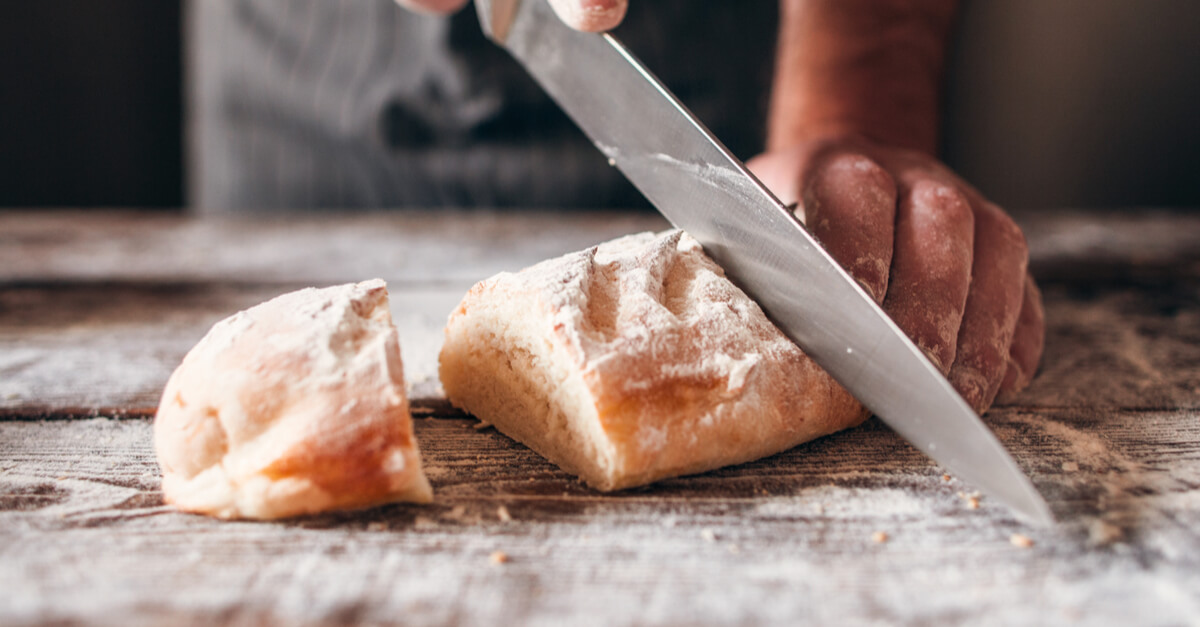The Struggle:
With bread baking becoming the new norm. I think we all find ourselves looking to create the breads we have become so accustomed to. Crusty breads tend to be a little more straight forward when using the traditional water, flour, yeast, and salt. But what about the soft texture of a traditional loaf of white sandwich bread. There is something so nostalgic about that texture for many of us. So how is it possible to change the texture of your bread to better fit your needs.
“How can I make my bread softer?”
Pillow Soft
Most of the time the interior of breads will be soft, while the crust is well… crusty. The crust will become dark and crispy as the heat penetrates the bread. The heat will evaporate the water from the exterior, browning the proteins and caramelize the sugars and starches. All these factors play into a crispy crunchy crust. But like i said above we don’t always want a crispy crust. Sometimes we want a softer crust, and it is possible to achieve this in a few different ways.
The first way to soften breads is to add fat somehow. Liquid fats are your best bet from sandwich breads or soft rolls. It could be as easy as replacing some if not all of the water in the recipe with whole milk. Be aware that this will also change how much the exterior will brown as well. In short the added protein and sugars will make the bread brown more. I would suggest staying away from butter unless you are making brioche. Solid fats will also become solid as the bread cools and can sometimes make for a stiffer bread until toasted. Vegetable, nut, and or seed oils all work great for this. While there is no exact ratio since every bread is different. When using oils do not replace the water with oil like you would with the milk. Leave the amount of water the same as the flour needs it. If you do want to add oil to your recipe you can begin by adding 5% of the total weight of the flour and adjust from there in your testing.
The second way is to replace the sugars in a bread with liquid sugars. Glucose syrup, honey, or agave work great. Glucose syurp and these other liquid sugars are known as invert sugars. Invert sugars are less prone to crystallization. This will then keep the crust soft and flexible rather than hard and crispy because the sugars are not setting on the surface.
Lastly, Sodium Stearoyl Lactylate is an ingredient that helps emulsify the water and fats in a bread to make it last longer before it goes stale. It also provides a softer crumb and better volume to any loaf you create. With all these tips you should have no issue making any bread or roll softer.
Ready to get Cooking?
Give our Soft As A Cloud Potato Rolls recipe a try! These tender, fluffy potato rolls are pull apart soft, yet still dense enough to hold their shape with the greatest of ease, even when generously book-ending our gut-busting bacon boursin smash burger. This easy recipe takes advantage of amylase’s ability to break down starches to yield a heavenly texture and add a mild flavor that uplifts any burger or sandwich.



6 Comments.
Is this a good bread machine bread mix using Expandex? Do you have a preferred and tested mix?
42 grams (about 1/4 cup) superfine brown rice flour (30%)
42 grams (about 1/4 cup) superfine white rice flour (30%)
21 grams (about 2 1/3 tablespoons) Expandex tapioca starch (15%)
21 grams (about 2 1/3 tablespoons) potato starch (15%)
7 grams (about 1 3/4 teaspoons) potato flour (5%)
4 grams (about 2 teaspoons) xanthan gum (3%)
3 grams (about 1 1/2 teaspoons) pure powdered pectin (2%
We can’t really comment on this recipe since we haven’t done it. If you’re happy with the results, great! If you’re not happy with it I would recommend removing the xanthan and pectin, and run adding back the other ingredients a little at a time. The xanthan gum amount seems too high just looking at this, since xanthan is usually used at <1%.
In search of a softer bread, I tried to use Glucoamylase powder when I last baked. Unfortunately my bread was ruined, because I think I may have used too much. How much of the powder should I use for 3 cups of flour? Thanks.
Sounds like you’re using product sourced from another vendor. Unfortunately we can’t provide support for non-MP products since we have no idea what the composition of that product is.
How much of the lactylate would you use with 3 cups of flour
While there is no exact per cup measurement, you can start at about 1/2 tsp per cup of flour. As always the best results will come when doing exact measurements by percentage.